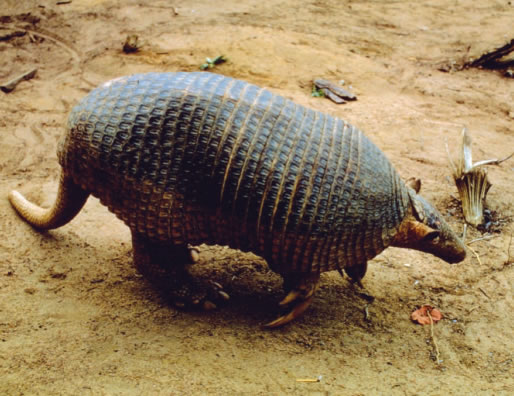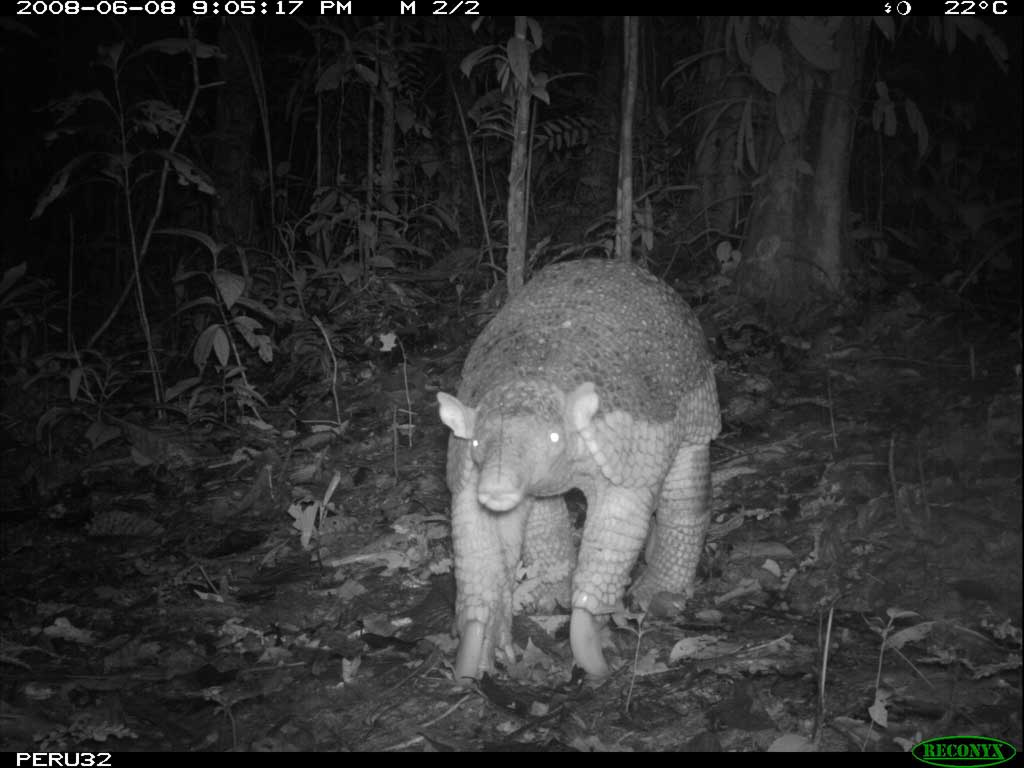General information
- Genus: Priodontes
- Species: Maximus
- Also known as: Giant South American Armadillo
- Average length: 1.5 – 1.6 m (5 – 5.2 ft.)
- Adult weight: 18.7 – 45 kg (41 – 99 lb.). Average: 28.9 kg (64 lb.)
- Diet: Ants and termites
- Natural predators: Jaguar and puma
- Life span in the wild: 12 – 15 years
- Litter size: One or two (usually one)
- Natural habitat: Close to water in undisturbed primary rainforest habitats.
- Geographical range: From Venezuela to northern Argentina and from Ecuador to the Guyanas and eastern Brazil
Interesting Giant Armadillo facts
- They have more teeth than any other mammal in the world, up to 100, although they are shed with age.
- The Giant Armadillo’s hard shell (also termed “carapace”) has 11 to 13 movable bands and its neck 3 or 4, which make this species extremely flexible. They are said to be capable swimmers.
- They spend the daylight hours, often over 24 consecutive hours, buried in big burrows they dig in sandbanks or sometimes in active or dead termite mounds.
- They have a very long and sharp comma-shaped claw on the third toe of each of their front feet. It can measure up to 20 cm. These claws are especially useful when digging and ripping open termite mounds and ant nests.
- The Giant Armadillo is one of the armadillo species that cannot roll itself into a defensive ball. It generally digs its way out of trouble or runs away from predators, often specifically into thorny patches as its armour protects the animal.
- Their defensive position is very similar to that of Giant Ant Eaters – they stand on their two hind legs, using their tail to balance and their front legs to attack.
- Its name, “armadillo” comes from Spanish and means “little armoured one”.
IUCN conservation assessment
- Estimated world population: Unknown but estimated at around 6 per 100km squared (39 miles sq.)
- Conservation status: Vulnerable
- Population trend: Decreasing
Sources
- Giant Armadillo – Smith, P., Mammals of Paraguay
- Superina, M. & Abba, A.M. 2010. Priodontes maximus. In: IUCN 2012. IUCN Red List of Threatened Species. Version 2012.2. Downloaded on 15 May 2013.

Giant Armadillo

Giant Armadillo seen on hidden camera in Tambopata
